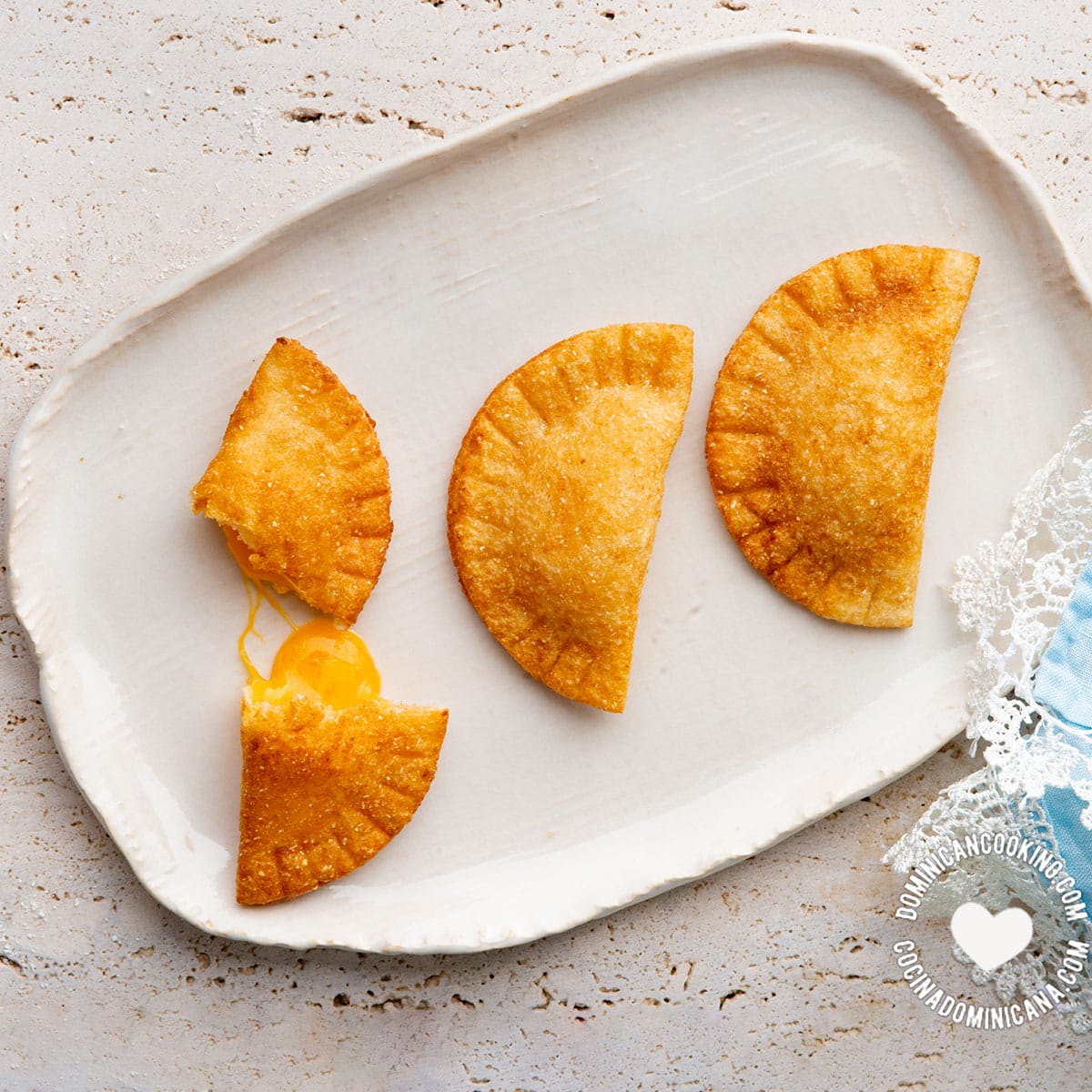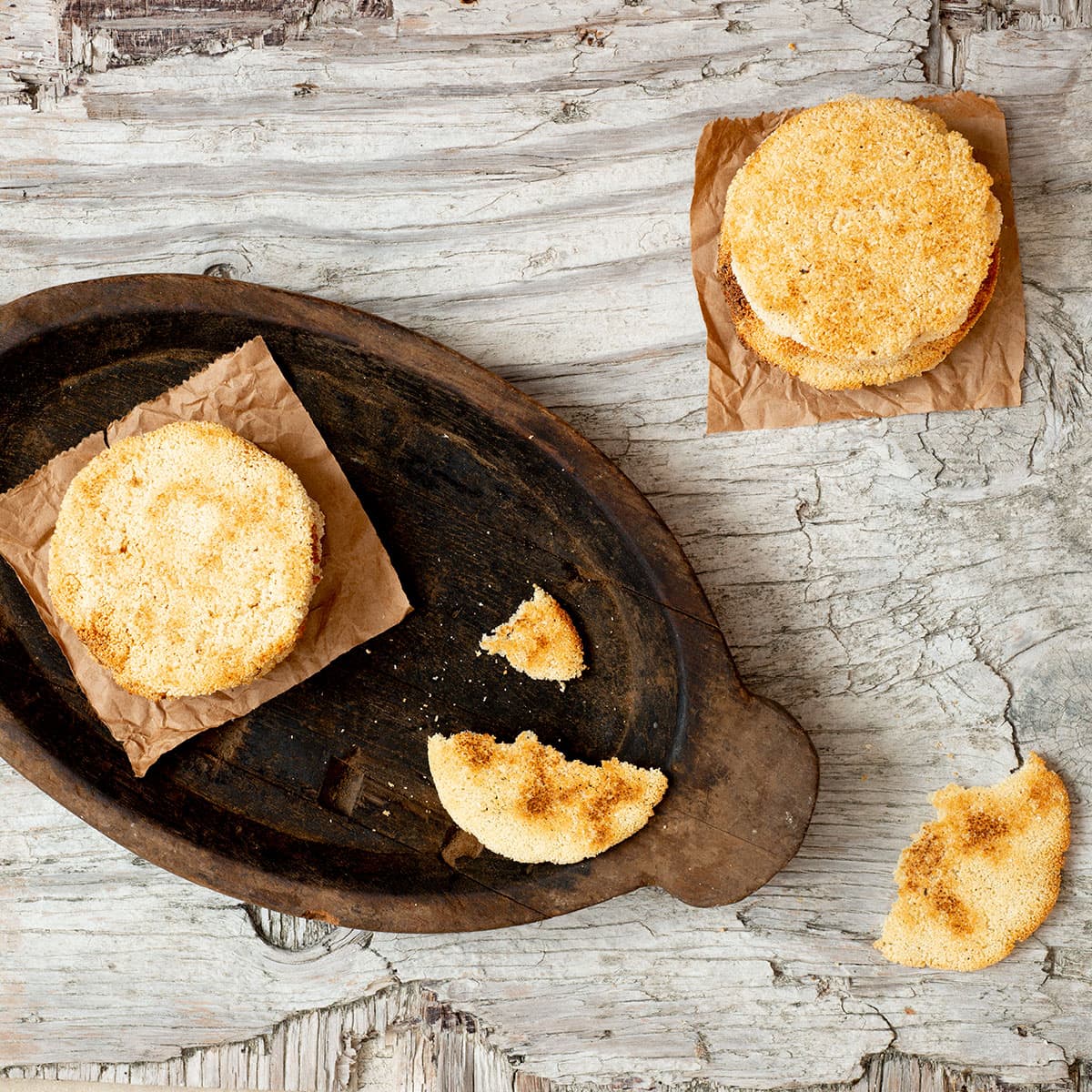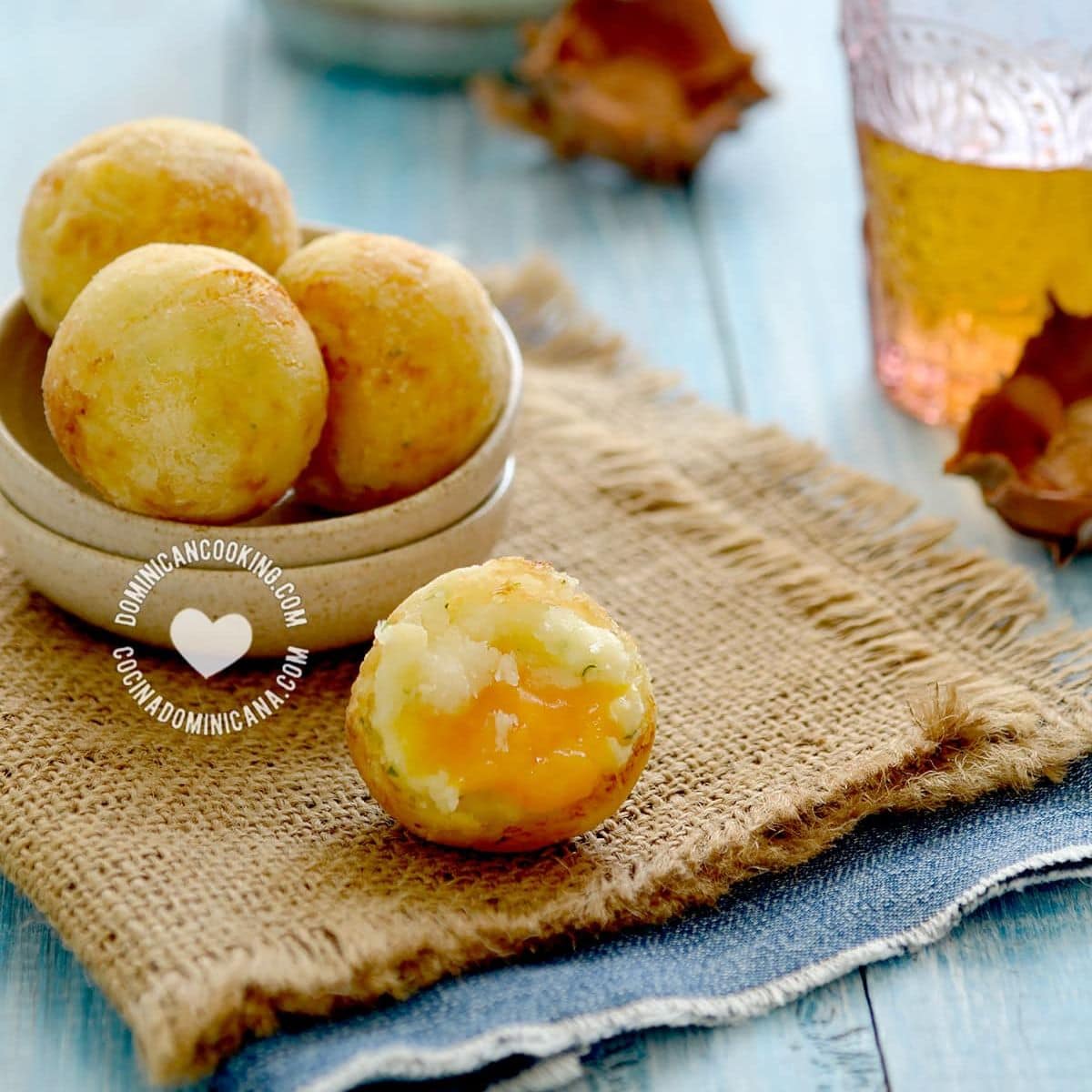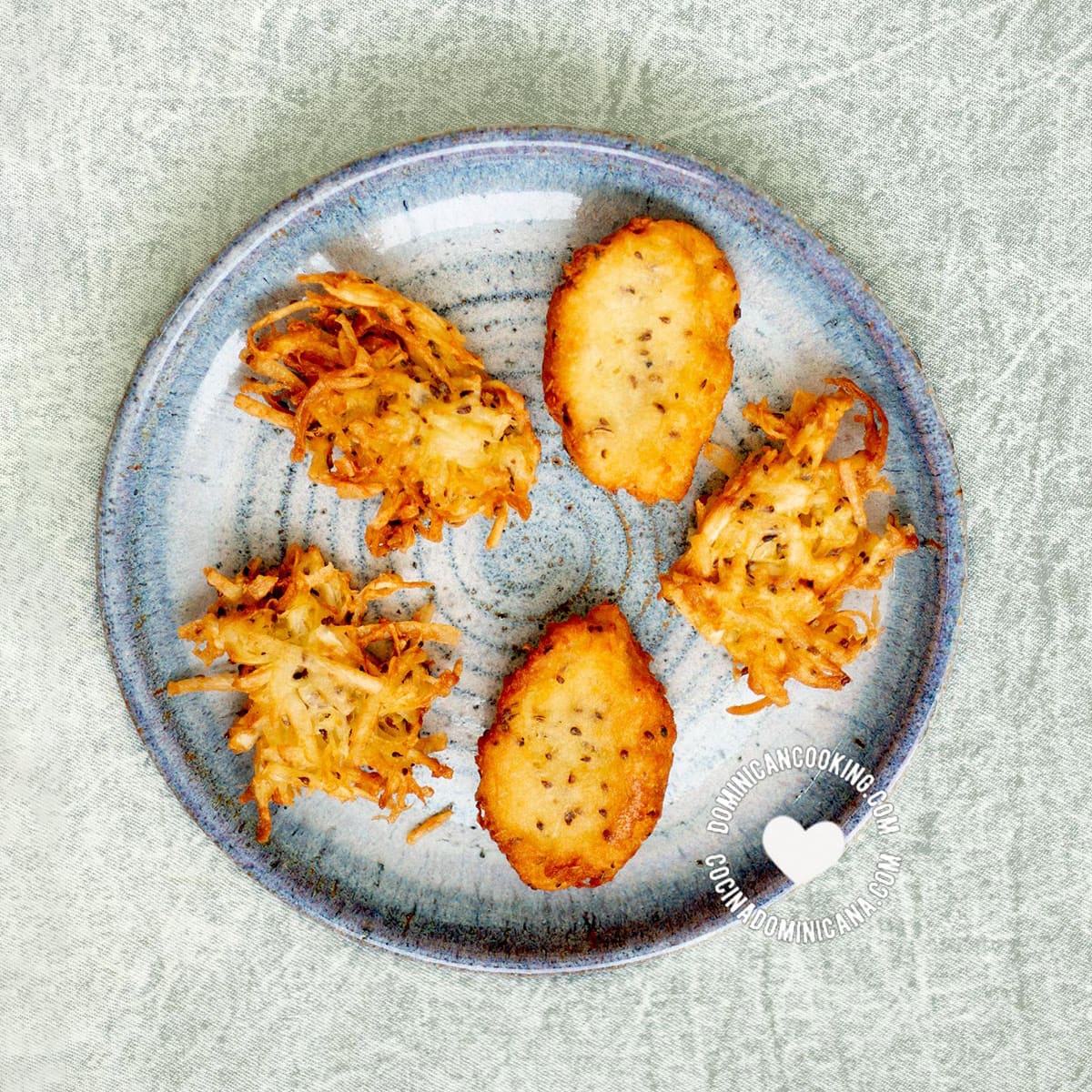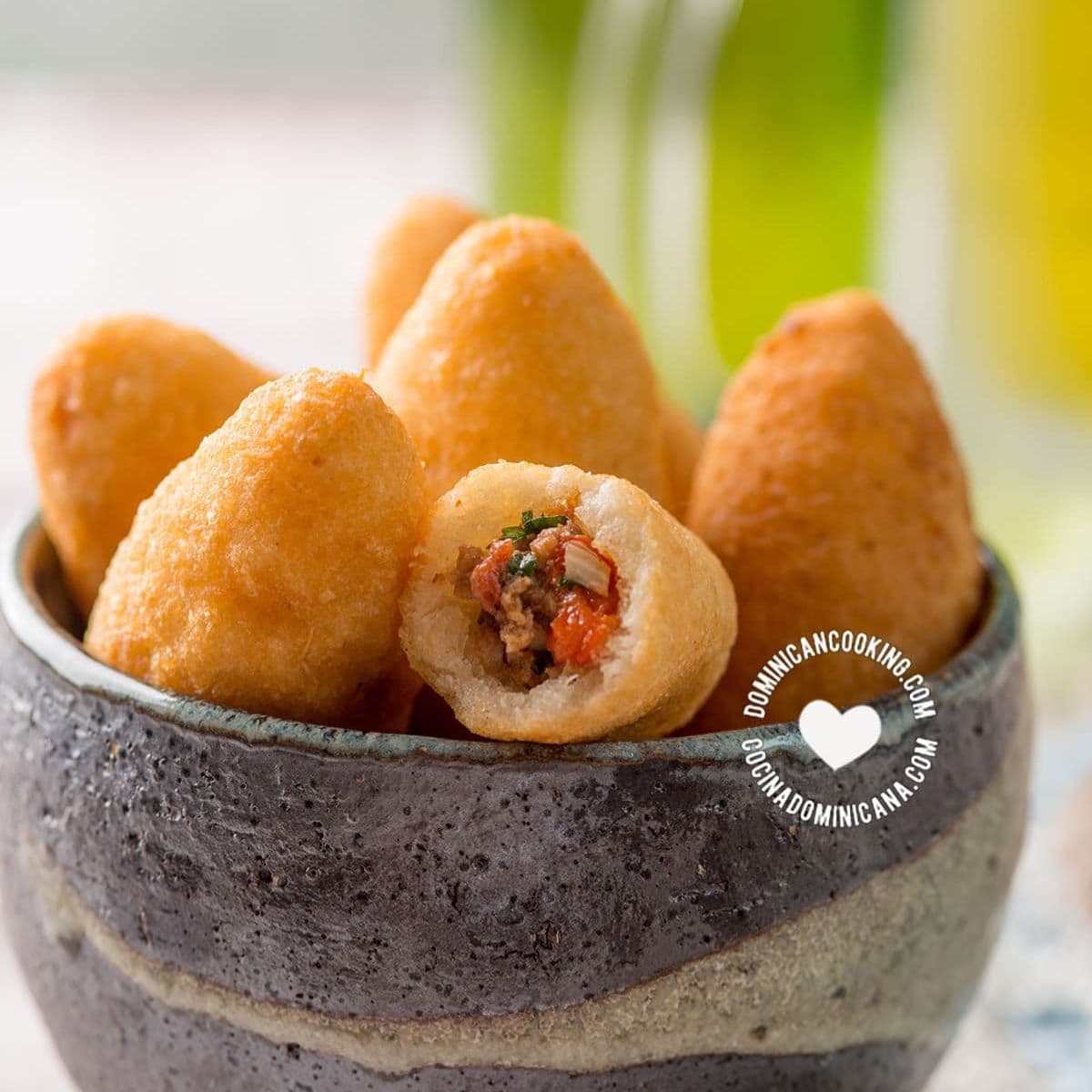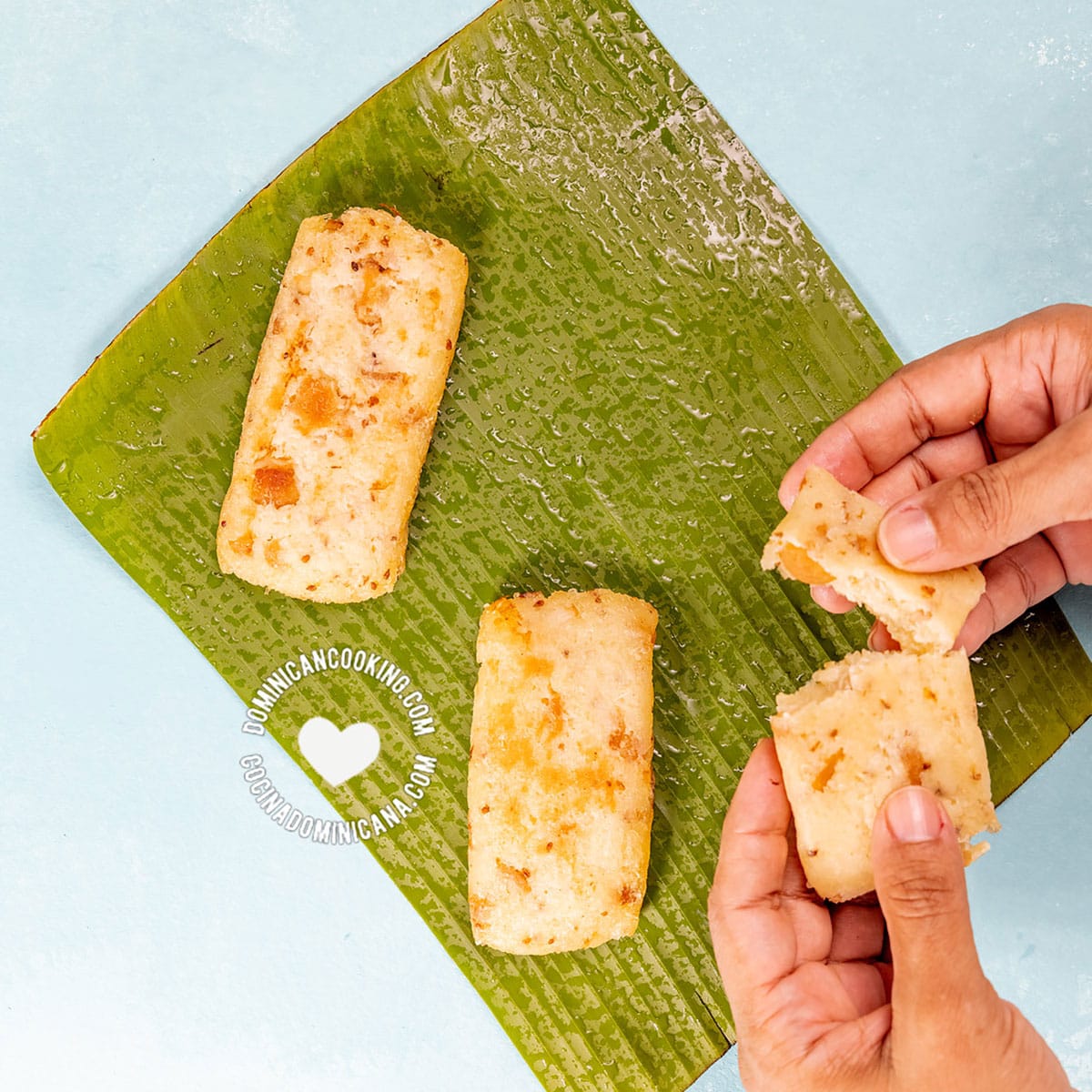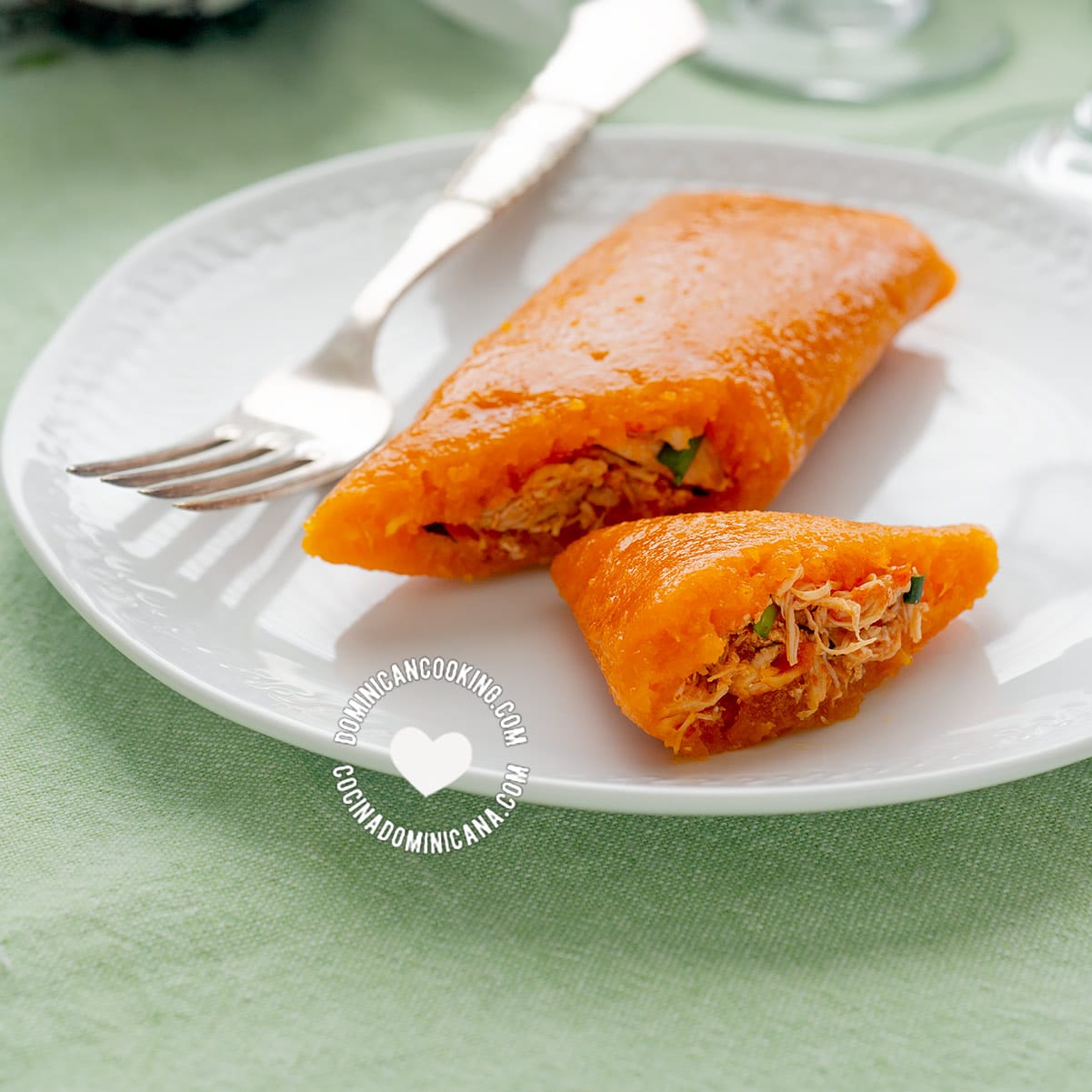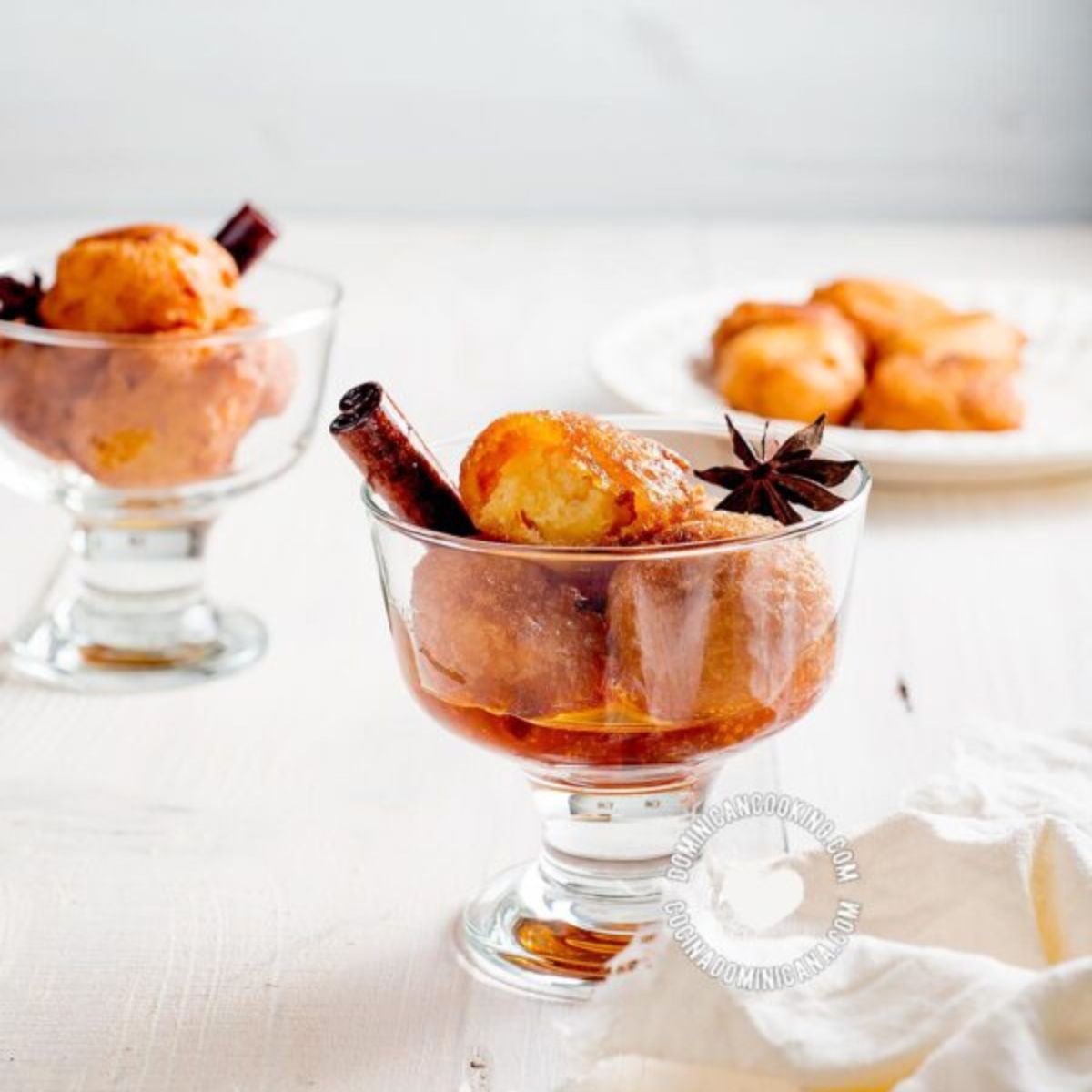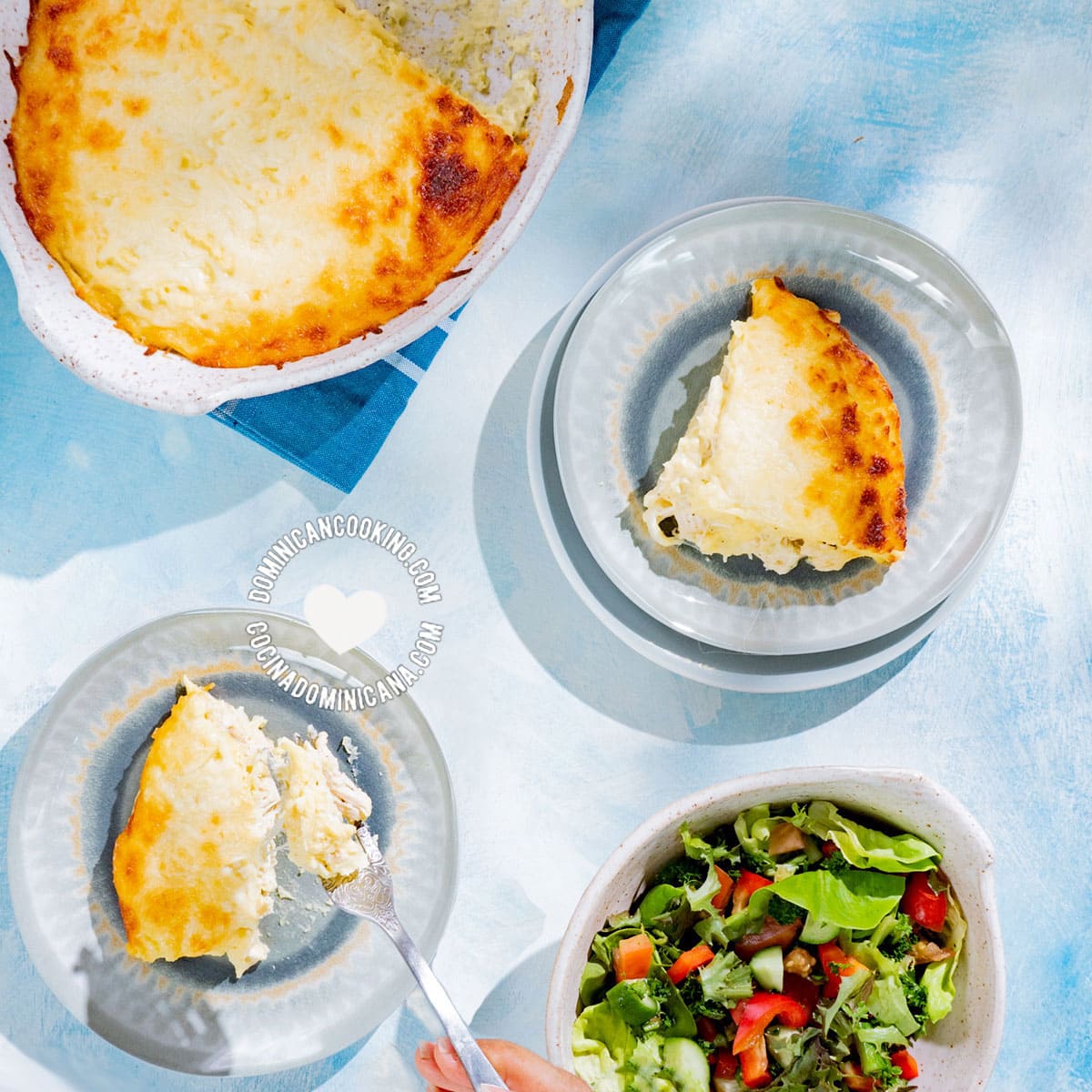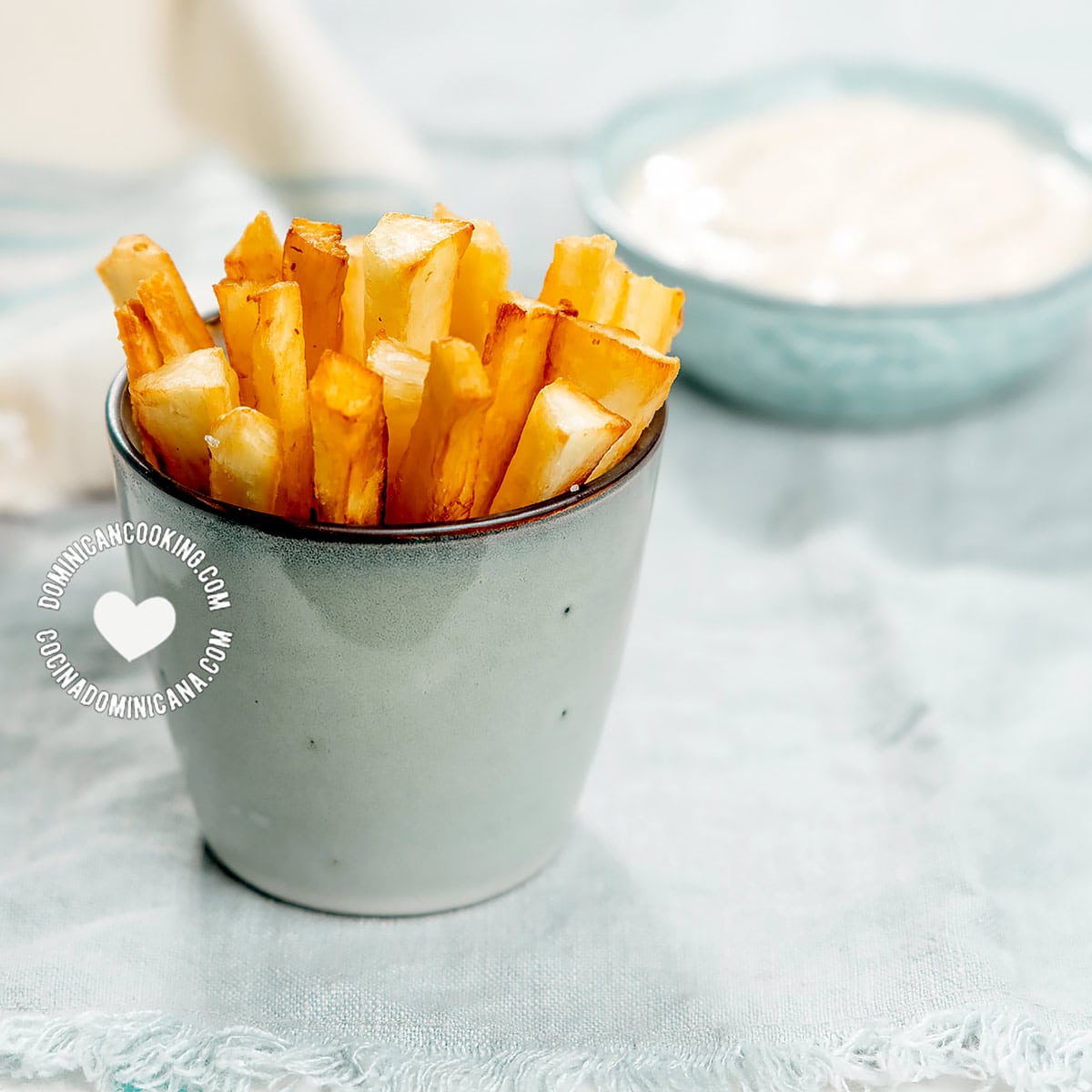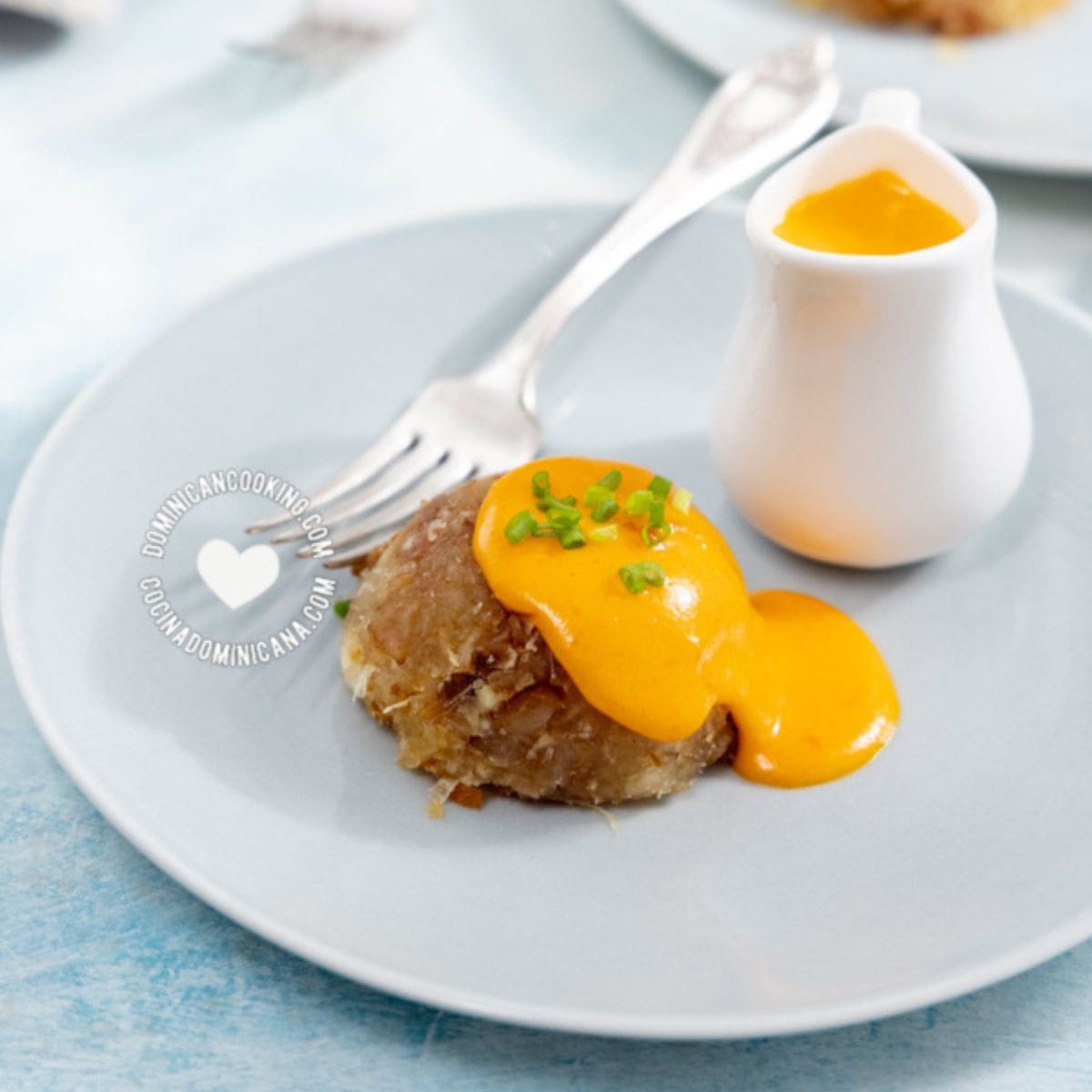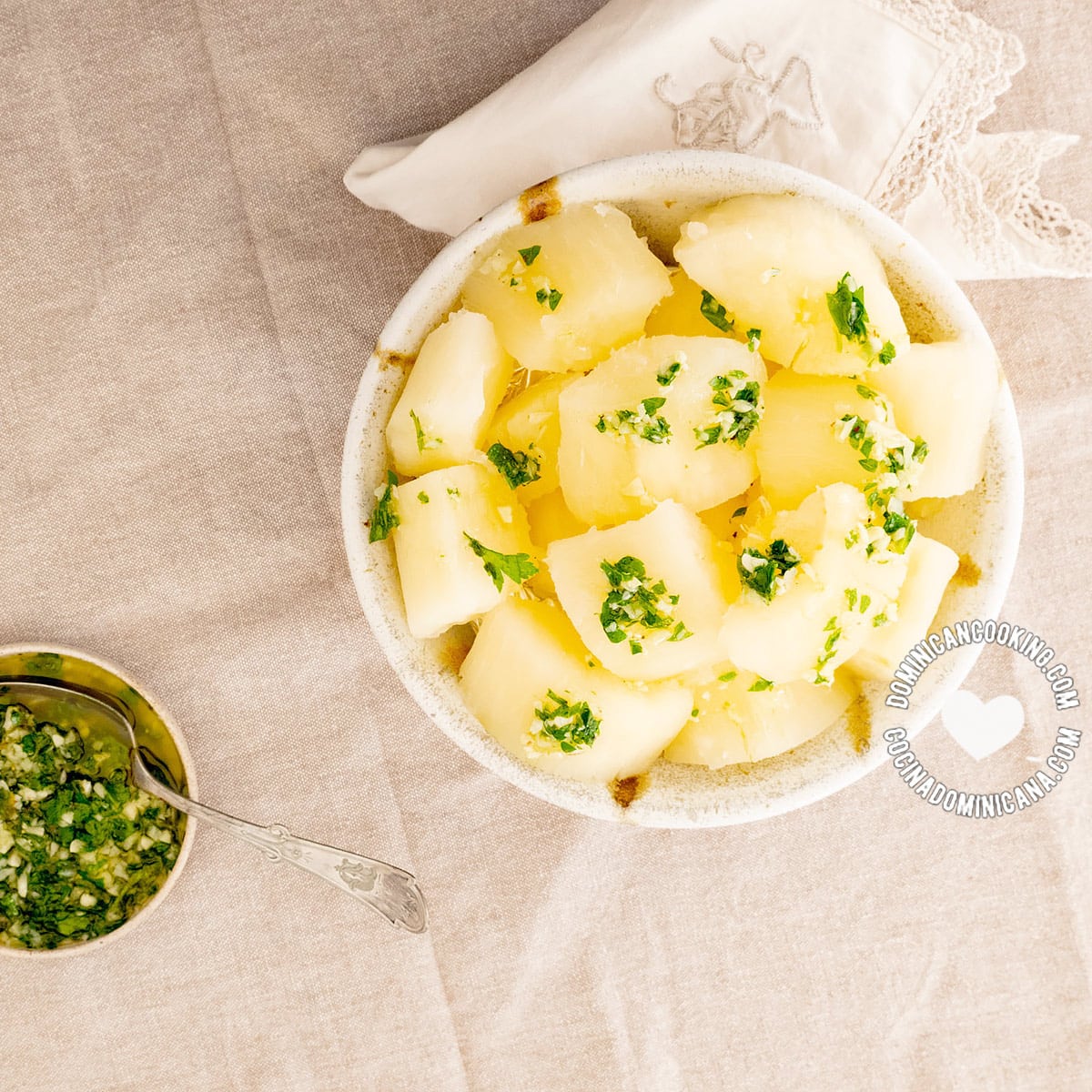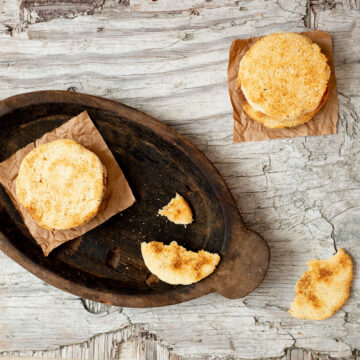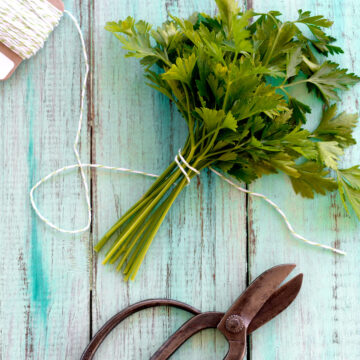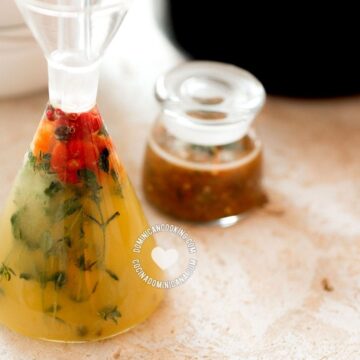Learn how to peel and cook yuca and much more with our essential guide to the amazing cassava root. Yuca is one of our ancient foods and has been consumed on our continent for millennia. See why we love this tuber so much and all the tasty dishes you can make with it.
By - Last reviewed . Published Dec 1, 2014
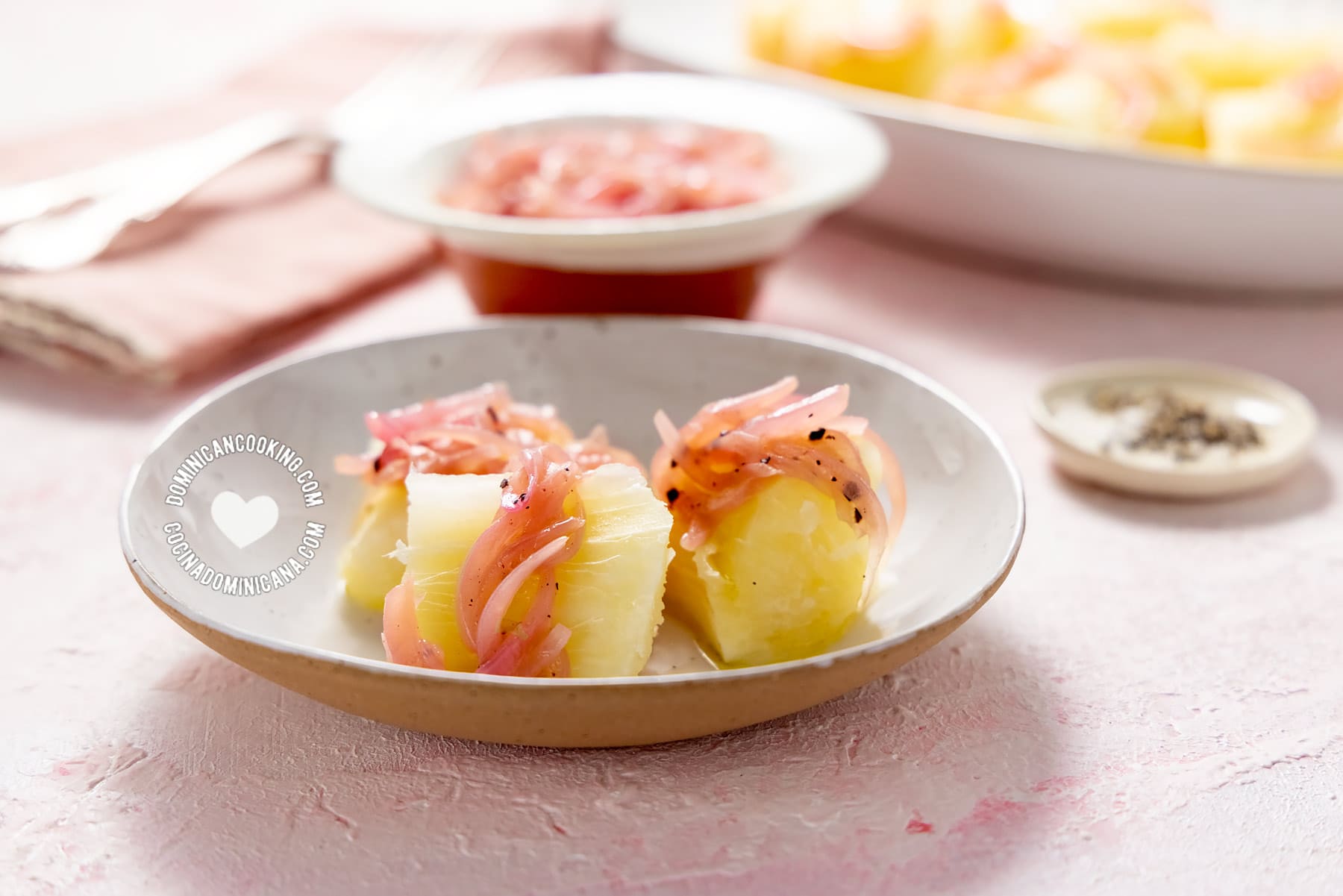
Why we ❤️ it
Yuca with its tender texture, buttery taste, and mild flavor lends itself to many ways to cook it. Yuca is more often than not cooked and boiled as a side dish, but it is a very versatile root vegetable.
What is yuca?
Yuca (cassava) is the starchy tuberous root of the cassava plant, the shrub Manihot esculenta. Cassava is a drought-tolerant plant, a thick tuber root with a thin brown skin, a thicker pink and white rind, and white flesh.
Yuca is a staple ingredient in Latin America, parts of Asia, and Africa.
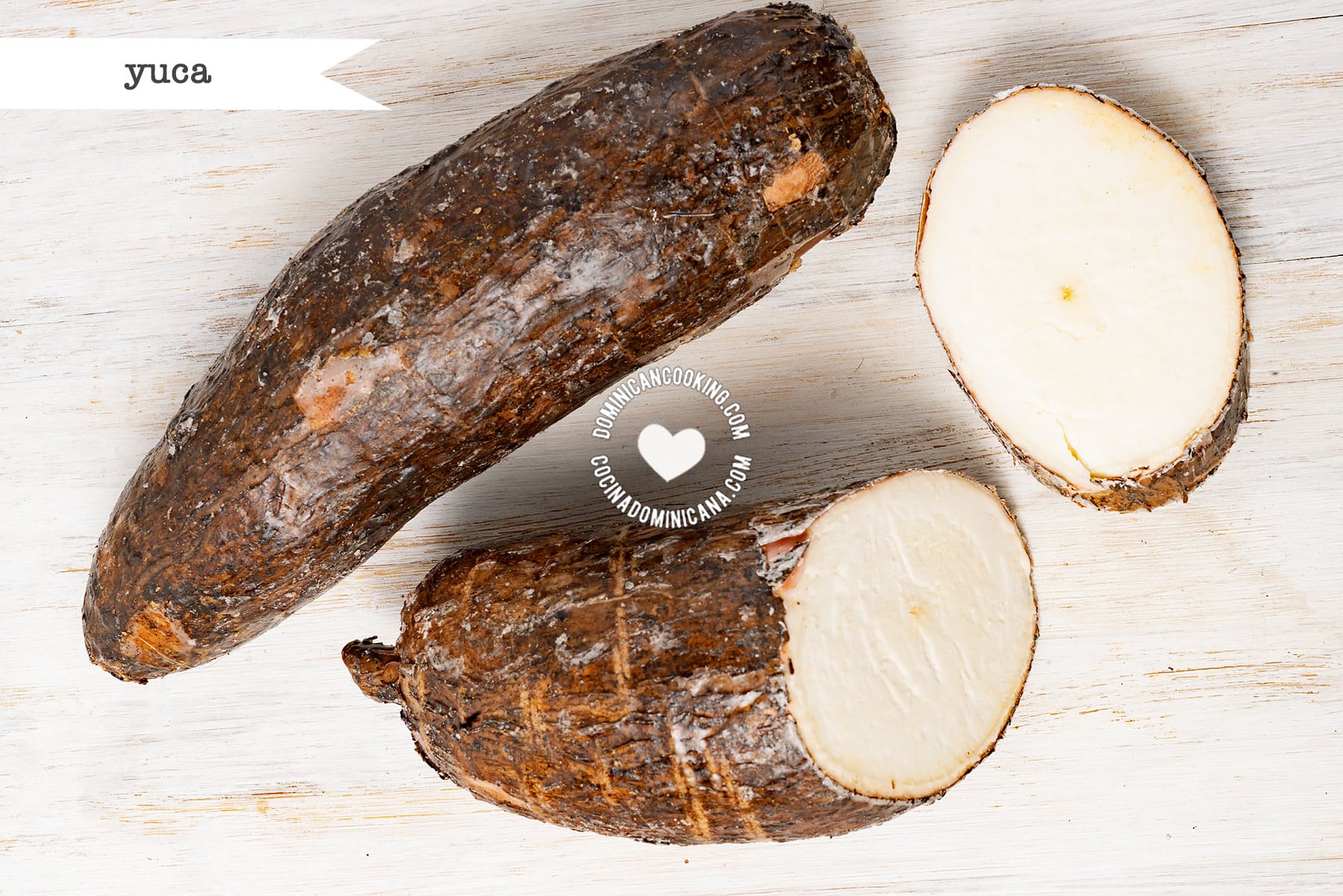
Popular yuca recipes
- Empanaditas de Yuca (Cassava Empanadas)
- Casabe (Cassava Bread)
- Bollitos de Yuca (Cheese-Stuffed Fried Cassava Balls)
- Arañitas and Arepitas de Yuca (Dominican Yuca Fritters)
- Chulitos (Spicy Cassava Rolls)
- Panecicos de Yuca (Cassava and Pork Crackling Bread)
- Pasteles de Yuca en Hoja (Cassava Pockets)
- Buñuelos de Yuca (Cassava 'Beignets' in Spiced Syrup)
- Pastelon de Yuca (Cassava and Chicken Casserole)
- Yuca Frita (Easy Yuca Fries or Cassava Fries)
- Mofongo de Yuca (Fried Yuca Mofongo)
- Yuca con Mojo de Ajo (Yuca al Mojo Garlic Sauce)
How to eat yuca
We boil it (yuca hervida with onion or with garlic sauce), fry it (yuca fries - and fried sweet potatoes, its faithful companion- or yuca mofongo), and bake it (pastelón de yuca) yuca dishes. We make bread, savory cakes, desserts, fries, fritters, tapioca dishes, and yuca flour dishes with it. It is also a common addition to soups and stews. You can see some of these below.
Yuca flour (which we call cativía) is used to make the namesake yuca empanadas that we love so much. We have a video you can use to make yuca flour at home. Cassava starch (tapioca), which is extracted during the casabe process, is also used to make a type of cookie.
How to peel yuca
Peeling yuca is very easy, but if you are not familiar with it, here's how to do it:
- Cut the ends on both sides and discard. Cut into smaller pieces that will be easier to peel (about 2" [5 cm]).
- Score both the thin brown skin --as well as the thicker pink peel underneath-- with the tip of the paring knife.
- Pull off the peel which should easily come off.
- Wash the yuca pieces in running water before cooking.
Anatomy of a yuca root
Yuca is a long brown root, and while size varies, it is usually around 5 to 7 inches long [12 - 18 cm], and 3 inches [7 cm] in diameter. The cassava root has a thin brown peel, that is sometimes covered in food-grade wax to extend its shelf life. Underneath the thin brown peel a thicker rind, pink on the outside and white on the inside, covers the edible part.
The edible part of the yuca, the root core, is white, and has a inedible center nerve that can be removed before or after cooking.
Names in English and Spanish
Cassava is also known in English as manioc, mandioca, or Brazilian arrowroot, and it is nearly universally known in Spanish as yuca, though in some places, it is also known as mandioca.
Cassava vs yuca: Bear in mind that the name yucca in English is not the same as yuca. Yucca is an ornamental desert plant native to North American desert areas. The proper name for yuca roots in English is cassava.
Storage
Yuca is a relatively long-lasting root vegetable. A traditional method for storing is burying it unpeeled in well-drained but slightly moist soil (my mom had a large pot with soil just for that purpose). It keeps well refrigerated (unpeeled) for about a week, especially if it comes covered in wax, it then starts to dry.
If you want to keep it for longer, peel it, chop it and freeze it in a tight bag with the least air inside as possible. Frozen it can be kept for about a month before the taste starts to suffer.
Nutritional information
Starch-rich, yuca is rich in carbohydrates. Among its nutrition properties and health benefits, yuca is fat-free and rich in fiber. It is also a good source of Vitamin A, Vitamin C, beta-carotene, potassium, choline, phosphorus, and magnesium. 100 grams of yuca contain 1.4g of protein, and 159 calories. Its main minerals are 14 mg of sodium, and 16 mg of calcium.
The main nutritional value of cassava is its high-carb content, which made it particularly valuable to Taino people.
Apart from the nutrient side, yuca is also a favorite with celiacs as it is gluten-free.
Safety of yuca
This is one topic that comes up often when people hear about yuca. While the original (bitter) variety of yuca contained toxic substances (including cyanide), the variety that is currently grown and sold in the Dominican Republic (sweet) has been bred to eliminate this toxicity.
Once cooked, it can be safely eaten without having to undergo the traditional processes used to get rid of the toxins. In any case, raw cassava should never be ingested [6].
Where to buy yuca
In the United States, Canada and other countries, you can buy fresh yuca (usually covered in wax to improve its shelf life) in many supermarkets and grocery stores that cater to the Latino and Caribbean communities. Sometimes only frozen yuca is available.
History of yuca
Cassava is native to an area of South America centered in western Brazil and brought to Hispaniola and the Caribbean by the natives of this region, who were the first to populate the island of Hispaniola. Yuca was a staple of the Taino diet, and the only ingredient in casabe, a dish that we still eat.
"So important was this food to these indigenous people, that the main god in their pantheon was called Yocahu Vagua Maorocoti, which is roughly translated as 'Our Great Lord of Yuca'". [1]
Consumption of cassava - alongside corn (maize), batata (sweet potatoes), and other staple food - has been going on on our island for more than a millennium. And although were staple crops have been introduced to our diets by Europeans - like rice and wheat products - we still love yuca nearly as much as the Taino did.
Yuca grows very well and is very well-adapted to our climate. Cassava is very important to our food security, as rice is more susceptible to plagues and drought, and wheat cannot be grown in our country.
Nowadays cassava foods are still homemade endeavors, but more and more we can see cassava products popping up in markets and supermarkets, like catibía (cassava flour), cassava chips, and industrially-produced casabe.
FAQs
- Is Yuca keto-friendly?
Yuca is a carb-rich dish, and thus difficult to incorporate into a keto diet. - What is your favorite way to prepare yuca?
Arepitas de yuca is my favorite yuca-based dish. - What are the best ways to prepare yuca?
Yuca can be fried, boiled, and made into casseroles. - Are yuca fries keto?
Yuca is very rich in carbohydrates, so yuca fries are not fit for the keto diet. - Are yuca chips healthy?
Depending on what you consider "healthy", yuca fries can be incorporated - with moderation - into a balanced diet. - Is yuca a potato?
Both yuca and potatoes are starchy root vegetables that can be consumed in a similar manner, but they are entirely different plants unrelated to each other. - Which is healthier potato or cassava?
It depends on what you consider healthier. 100 grams of boiled yuca has 159 calories, 0.3 grams of fat, and 38 grams of carbs. 100 grams of boiled potato has 87 calories, 0.1 grams of fat, and 15.4 grams of carbs. - What has more carbs potato or yuca?
Per hundred grams, yuca (38 grams) has more carbs than potatoes (15.4 grams). - Can I use potato instead of cassava (yuca)?
In some recipes you could, though the texture, consistency, and taste won't be similar. In other recipes they aren't interchangeable.
References
- Juan B. Nina, El Origen de la Cocina Dominicana. Sto. Dgo: MedyaByte, 2002. Page 21.
- Frank Moya Pons, The Dominican Republic: A National History. Sto. Dgo: First Markus Wiener Publishers, 2006. Page 19.
- The Journal of Gastronomy. California. American Institute of Wine and Food, 1987. Page 47.
- Itinerario Histórico de la Gastronomía dominicana. Sto. Dgo. Amigo del Hogar, 2014. Page 27.
- Cultivo de yuca (FDA and CDAF)
- Cassava Inspection Instructions (FDA)


